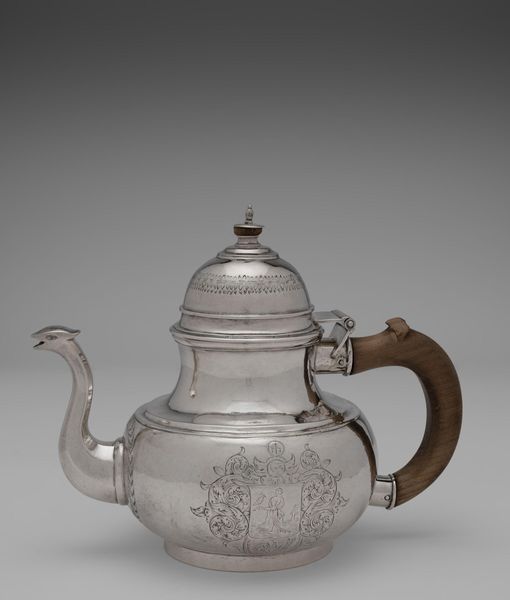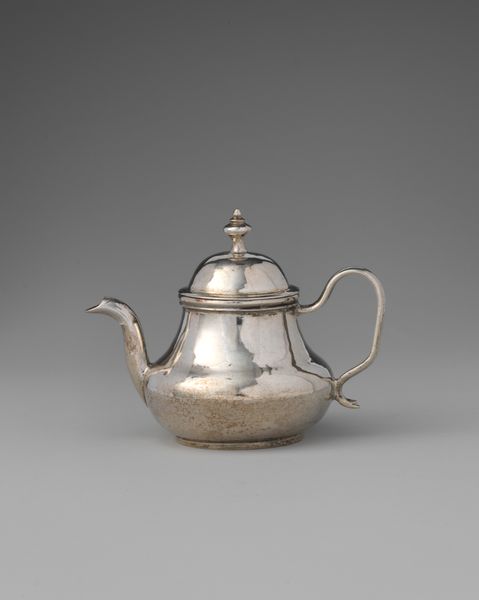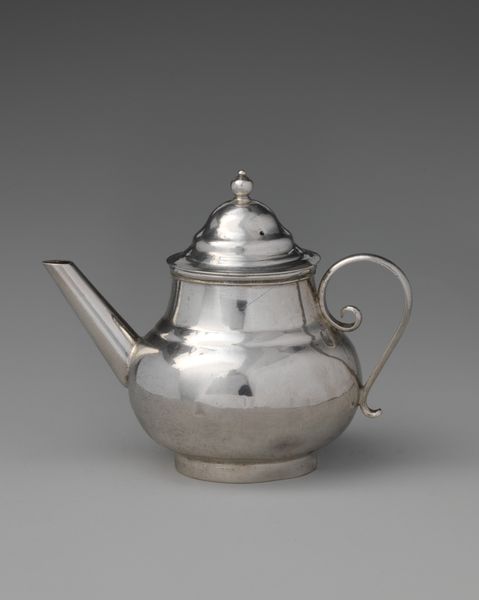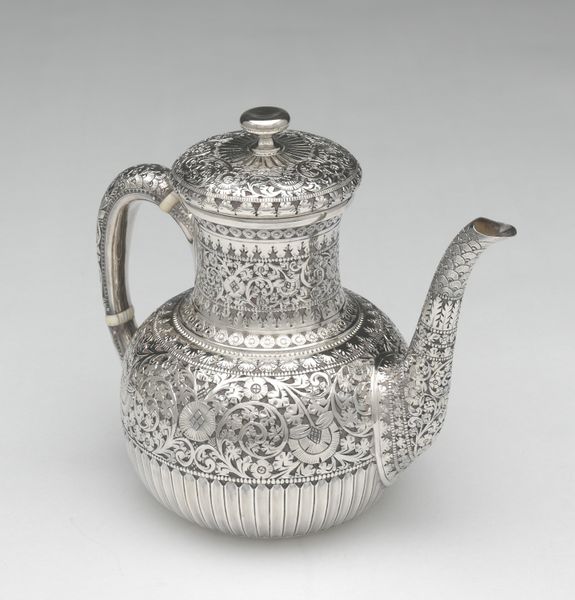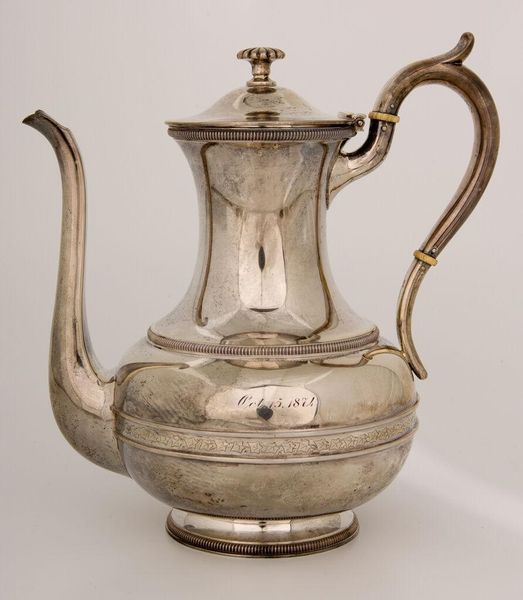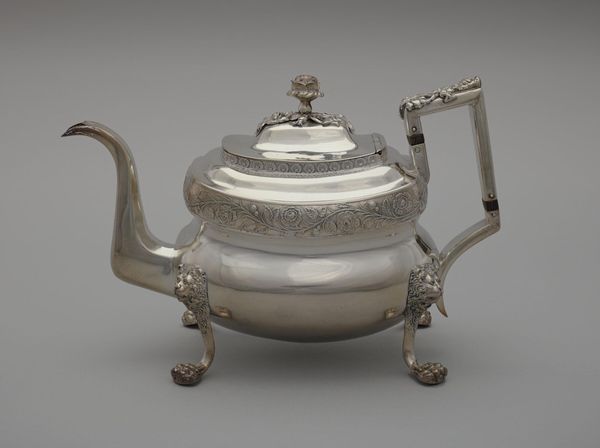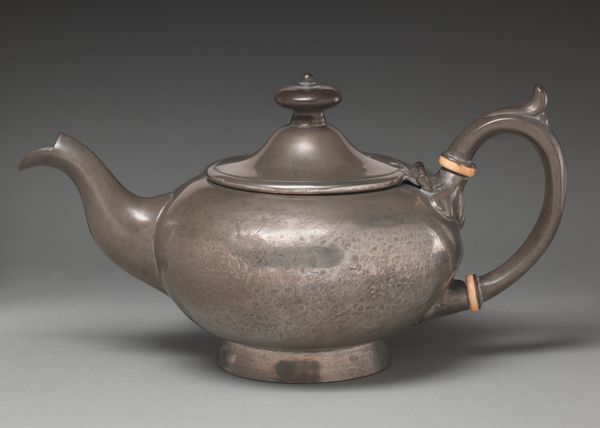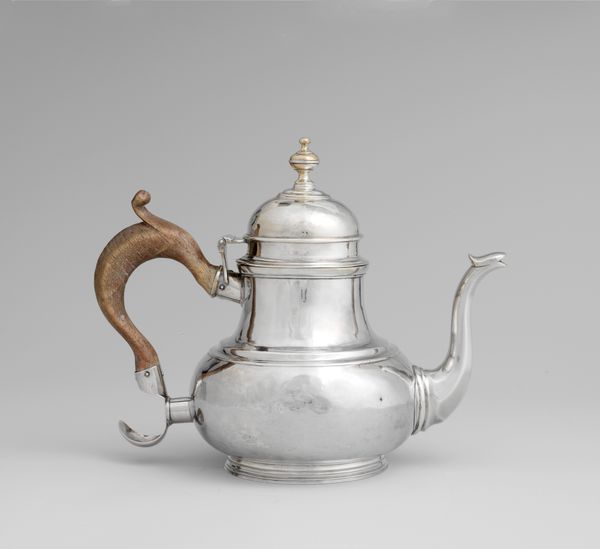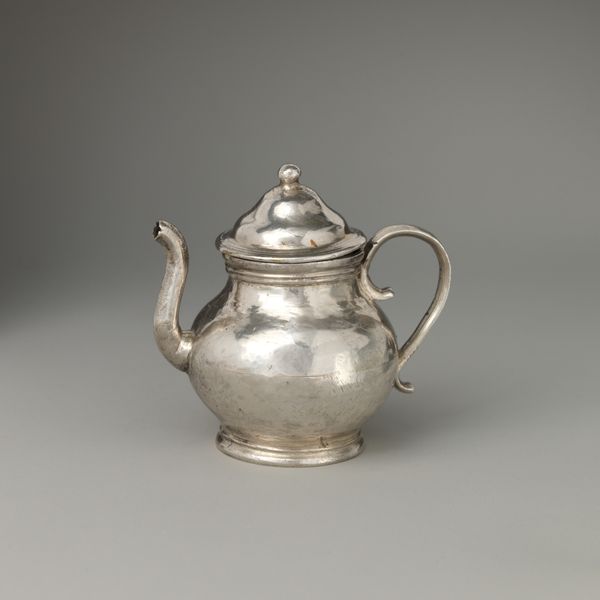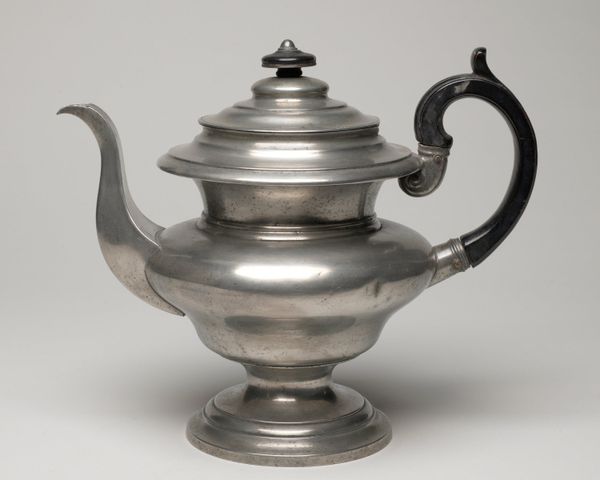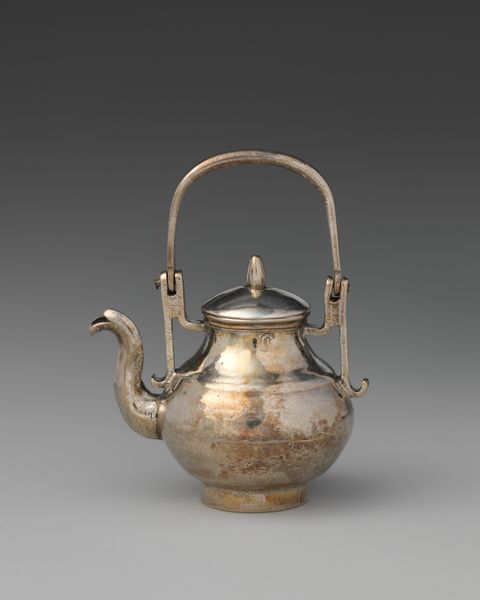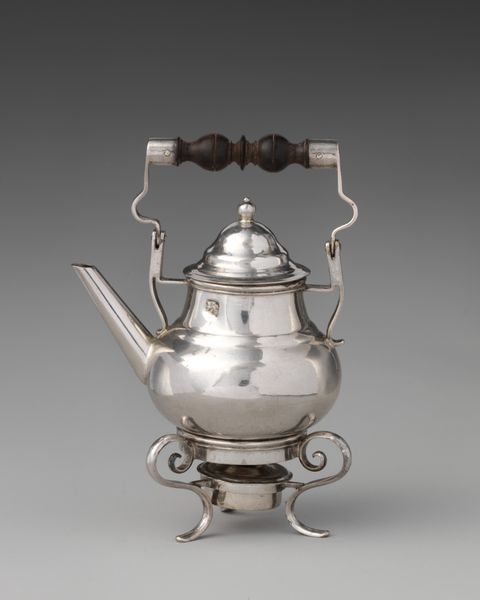
silver, metal, sculpture
#
silver
#
baroque
#
metal
#
sculpture
#
decorative-art
Dimensions: Height: 5 7/8 in. (14.9 cm)
Copyright: Public Domain
Curator: Oh, there it is! It reminds me a bit of a stout silver penguin. Very refined, though. Editor: Yes, this is "Teapot," crafted between 1718 and 1719 by Thomas Langford I. You can see it now at the Metropolitan Museum of Art. Made of silver, it’s considered part of the decorative arts tradition and exhibits traits associated with Baroque aesthetics. Curator: Decorative is right. It's less about function, I think, and more about flaunting…wealth, taste, status? Like, imagine the pinkies up as you poured! It has this lovely gleam too – like moonlight on metal. Editor: The reflective surface undoubtedly signifies luxury, but let’s also consider the historical context. Tea drinking in the early 18th century was inextricably linked to colonial trade routes, and this teapot embodies the problematic glamour of empire. The beauty is undeniably intertwined with exploitation. Curator: Right. You’ve pierced my bubble. It’s so easy to get lost in the curve of that ebony handle, that quirky little spout, but thinking of it sitting on a table laden with stolen goods definitely changes the… flavor. Editor: Exactly. Notice the understated coat-of-arms; this speaks to power dynamics, a visual assertion of the owner's place in society. A teacup in this era might be evidence for the kind of extraction that fueled a burgeoning consumer society back in Europe. Curator: The shape also seems deliberate. A very robust lower half transitioning up into this sort of more precise geometric top; quite angular. Do you see it like I do? It’s this grounding that is literally elevating. Like someone finding their footing? Editor: That interplay of rounded and geometric forms is typical of Baroque design – a movement steeped in complex metaphors of control and exuberance. Also, you can draw an ideological parallel here. Curator: Okay, I'm picking up what you’re putting down now, although I wish the reality was a little less…heavy. Editor: Sometimes confronting that heaviness allows us to appreciate the skill and craftsmanship of the artisan on another, more honest level. Curator: And maybe inspires us to re-evaluate what "beautiful" really means.
Comments
No comments
Be the first to comment and join the conversation on the ultimate creative platform.
